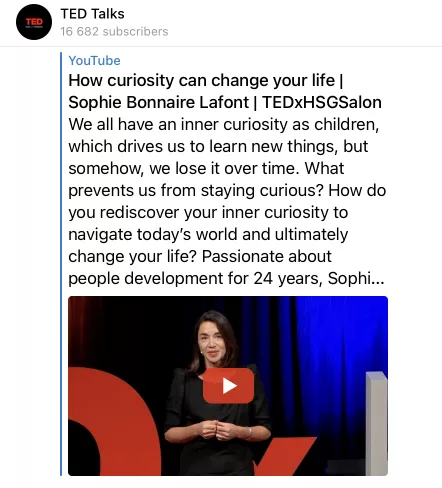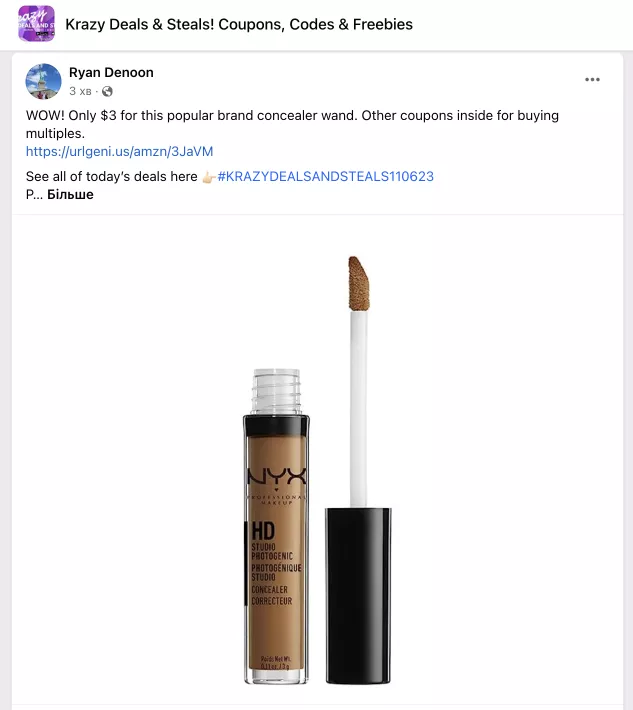More than five billion people use social networks, and all of them are your potential clients, customers, and partners. And social media marketing (SMM) helps you tell them about your product. Let's understand what SMM is, how it works, and why your business needs it.
We will discuss:
- What is SMM?
- Why do SMM, and who needs it?
- The goals of SMM
- Which social media to choose?
- Social media marketing tools
- Methods of promotion in SMM
- How do we understand that SMM works effectively?
- Key takeaways: an SMM checklist
What is SMM?
SMM (social media marketing) refers to the use of social media platforms to achieve business goals. Facebook, Instagram, LinkedIn, Twitter, TikTok, or other platforms are invaluable tools for promoting a brand, product, or service.
More specifically, SMM involves:
- publishing content through a social media profile to tell others about the brand, its uniqueness, and values;
- attracting new subscribers – potential consumers of your product;
- communication with the audience;
- launch of advertising on social networks;
- promotion of the brand image;
- analysis of the results.
Why do SMM, and who needs it?
People use social media to meet people, establish connections, learn about competitors, and look for potential partners. When they visit a social media platform and see something interesting, they naturally want to subscribe, comment, or purchase.
It is no exaggeration to say that everyone needs social media marketing: online and offline stores, large retail chains, and local brands. However, specific nuances apply to different types of businesses. Social media marketing will be successful when done correctly and efficiently.
If you need more confidence in your abilities, take your time. First, understand the advantages and disadvantages of SMM. Unfortunately, social marketing is not a magic wand. Being present on social media is essential, but only a high-quality marketing strategy will yield results. An unsuccessful SMM strategy can backfire on a business and ruin its reputation.
Dive into our glossary for key SMM definitions to boost your social media strategy!
Advantages of SMM promotion
1. Build trust. Social media is the foundation of audience trust in business. If a company talks about itself on popular social networks, creates content, shares profitable offers, and communicates with customers, it shows proof of its existence.
Besides, customers don’t always want to go to an offline store or talk to a manager by phone. The path to purchase should be as comfortable as possible for the customer – preferably at home, with a phone in hand and a manager ready to answer any questions online.
2. Keep customers informed. Whether it's a new product, an exciting promotion, or company news, social media makes it convenient for the audience to follow all of your updates using their phone. They can ask questions, screenshot photos of products, or save a post describing a service. Today, social media has become a large notebook of useful contacts that almost everyone can access.
3. Increase brand awareness and loyalty. When you present your business online, you are not talking about individual products but about the brand. With the correct algorithm of actions, people begin to recognize your brand, share information about it, and associate it with certain values.
The closer the connection between the business and the audience, the more comfortable the customer is. Regular interaction shows people that you care about them and that you are not indifferent to your customers’ needs. In the future, they will be ready to share information about your product, for example, if they purchase or use a service.
4. Simplify communication. How do you find out what people say about you and how they rate or criticize your product? Just go to the comments! Moreover, almost everyone is on social media, which lets you access different audience segments.
Difficulties of SMM promotion
1. Get ready to spend a lot of time on it. Social media is not a one-off task. You need to constantly create new content, publish it on time, communicate with the audience, solve problems, and set up advertising. SMM marketing can be challenging if you have a small business and limited resources.
2. Get ready for negative comments. If someone doesn't like your product or service, they can very quickly share their dissatisfaction in the comments, and everyone can see it.
Social media platforms are an exhibition of complaints and negative feedback. People write about bad experiences more often than good ones — sometimes, a client just needs to vent. And some people see it as a social duty to prevent others from "stepping into their shoes." Of course, negative reviews can affect business: new users will see the ratings and comments and tend to trust other people's experiences when they first hear about a new project.
How do we deal with the negative reviews? Negative feedback is an opportunity to identify problems in your business and understand its weak points or areas for improvement. Never delete complaints or ignore them. A calm response and willingness to resolve a conflict show respect for the customer and represent certain company values.
3. Get ready to wait. You've invited a designer and a marketer, written a strategy, and created an account, but it doesn’t seem like it is working or that it works slowly. Social media marketing doesn't deliver instant results. It depends on the overall success of your company and your brand positioning. It's not enough to make a post with a nice photo and expect to get shares, likes, and followers immediately. It can take several weeks or more to see the results of a campaign, depending on its duration and your goals.
It is crucial to track the effectiveness of your social media posts. When the PPC campaign is over, you can compare the reach and performance of the campaign after its launch.
What does an SMM specialist do, and why do you need one?
At first, everything seems simple: post more often and post cats. But SMM is a little more complicated than it seems.
A professional, integrated approach is essential. Social media users today are not impressed with just photos and texts. You need to create a content plan, study the target audience, analyze competitors, and set up advertising.
And most importantly, all of the above is created individually for each project.
This is where an SMM specialist comes in. An SMM specialist is a person who will create the "face of the company” on social media and ensure that potential customers like this image.
What exactly does an SMM specialist do?
- Create content for social media. They will think of content to tell your customers about and why they should be interested in it.
- Publish texts, photos, videos, and other materials on social media. Develop creatives, which are exciting solutions that will help you stand out from the competition.
- Work on the visual part with a designer or photographer and write down the terms of reference. Of course, "universal soldiers" can also create visual content themselves, but this affects the quality. It is better to leave the visible part of marketing to those who are especially experienced in it.
- Moderate comments. Answer questions, explain products, help customers, and resolve conflicts if the client is dissatisfied.
- Contact bloggers, influencers, and opinion leaders if advertising from Internet personalities suits your business.
- Develop a strategy. The SMM manager prescribes how your business will be promoted, over what period, what results it will achieve, and how much it will cost.
- Engage in promotion. This includes setting up paid advertising and coming up with contests.
- Track statistics on how many customers social media brings and what content or marketing tools work best.
SMM goals
You've decided that your business needs SMM. It is time to define your project goals because they will form the basis for your future SMM strategy. Otherwise, it's unclear where the project is going and why it needs SMM.
Here are the main goals of social media marketing:
1. Sales. Most often, this is the main goal of SMM. Social media is an excellent place to tell many users about your product.
2. Recognition. This refers to increasing the number of people (subscribers) who know about your brand and its values. This goal is suitable if you are introducing a new product, entering a new market, or have just recently joined social media. Recognition is the foundation for potential customers to understand who you are and what you do.
3. Reputation. This goal is similar to the previous one. Still, in the case of reputation, you need to work with new customers rather than analyzing the experiences of people who have already become product users. Did they like it, what feedback did they leave, and how many people became regular customers?
Reputation is also about how users describe your brand online, what they associate it with, what they say about it, and whether they trust it.
4. Building a community. Interacting with regular and potential customers online will help you create a community for your product. Discussions, calls for opinions in the comments, answers to questions, helpful information, funny pictures, or even memes can encourage people to interact with your business and get to know it better.
5. Increase website traffic. For many companies, driving traffic is part of online sales. After all, a website is often the last step before a purchase.
As you grow your business, you can create any goal that is suitable for you. Use the S.M.A.R.T. approach to help you formulate them as clearly and realistically as possible. The goals should be:
- Specific
- Measurable
- Attainable
- Relevant to your business
- Timely
Which social media to choose?
It is important to be selective. If a brand is present in all available social networks, it is not a sign of success. SMM is not just blindly publishing content in the "so that it's there" format. Posts need to be adapted to each platform, considering the average age of active visitors and the type of content applicable to that platform. Therefore, focusing on one or two social networks with a well-thought-out strategy is better than on five social networks with low-quality content and inconsistent actions.
Portrait of a Facebook user
Dominant age group: 25-34.
Facebook is a universal social network for people to communicate with brands. It allows its users to share news, exchange photos and videos, and create meetings and stores to sell goods within the platform.
Portrait of an Instagram user
Dominant age group: 18-24.
Photos and videos can be posted to the feed, stories, and reels, which are an analog of TikTok. On Instagram, users primarily focus on visuals. Companies can publish several images in one post to show users more content, as Huawei has done.
Portrait of a Twitter user
Dominant age group: 25-34.
Despite the 280-character limit, the platform has several non-obvious advantages. It is a fast and short format with almost no brand advertising. Many young people are on this platform; Twitter is popular for setting trends and memes and has its own niche culture. The platform is not used for direct sales but instead helps to create an image of a creative and progressive brand.
Portrait of a TikTok user
Dominant age group: 10-19 (32%) and 20-29 (30%).
Contrary to popular belief, TikTok is more than just a platform for children. Over the past few years, the platform has experienced a sharp rise and even surpassed Google in terms of traffic, with more than a billion active users today.
Remember, video content here should entertain, educate, inspire, and share something interesting with the audience. Direct sales promotions do not attract viewers, so SMM promotion on social media should be more subtle.
Portrait of a LinkedIn user
Dominant age group: 21-45.
The platform for job search and employees allows you to share content on professional topics. It also lets you communicate with job seekers and promote your employer’s brand. Can a company that posts photos of its employees' pets be wrong? :)
Portrait of a YouTube user
Dominant age group: 26-35.
This platform is the world's largest video aggregator and hosts all kinds of content, from shows to professional blogs.
On the downside, the entry threshold is quite high. Getting views requires a lot of effort: high-quality equipment, sound editing, and a good script. In this video, Gucci's YouTube channel talks about the backstage elements of the show and introduces guests and brand ambassadors.
Portrait of a Telegram user
Dominant age group: 25-34.
Telegram has long gone beyond being a messenger and is now more like a news platform. Telegram channels allow you to follow important events, watch photos and videos, and read posts on any topic.
Telegram allows you to share information with customers, respond to comments, conduct polls, and build a community around your product. For instance, TED Talks shares links to speakers' speeches on their Telegram channel.
When choosing the perfect social media platform for your business, first of all, consider who your audience is. What they read, how they perceive information, what content they consume, how old they are, what gender they are, where they live, and how much they earn. Even high-quality content may not get you the desired results if you choose the wrong social media platform.
Social media marketing tools
Let's look at how SMM helps businesses improve their popularity and how it works in practice.
Content management
"Content is king" – Bill Gates said this phrase in 1996, but it remains relevant today. Content is the basis of an account. Regardless of your advertising tactic or budget, everything rests on the content.
Content marketing aims to create interesting, relevant, and attractive content on your page. Instead of directly advertising a product, offer your audience something worthwhile to read or watch.
Contests and giveaways
A contest is an excellent way to increase engagement among your followers and attract a new audience.
How does it work?
- You announce a contest and specify its conditions – for example, sign up for an account, repost the entry to your feed, and tag a friend in the comments. You also specify the contest's end date and the day the winner will be chosen.
- Participants begin to fulfill the terms of the contest and share the post.
- A chain reaction starts: people repost the post, and new potential customers learn about the brand. Of course, they can unsubscribe after the contest, but some new subscribers will stay.
Interactive content
It all depends on your imagination. The main thing is to stand out from other brands and motivate your audience to be active: comment, write a review, and watch a story or video. All of this helps social media algorithms bring your content to the top. You can use different formats, such as tests, questions, challenges, original designs, or animated images.
Comments and tone of voice
Communication on the Internet is no less important today than in real life. Here, the tone of voice is of great importance, and it is influenced by the kind of wording you use and the style of communication you follow. A business that not only talks about itself but also speaks to the audience in a friendly manner, calmly resolves conflicts, and responds even to negative comments increases customer loyalty.
It's important to pay attention to audience questions and respond promptly. This way, businesses can establish friendly contact with users and show that they care.
SMM promotion methods
Sometimes, social media algorithms can get in the way and make it difficult for accounts to reach the top and grow their audience. In this case, paid advertising comes to the rescue.
Targeting
Targeted advertising is a form of online marketing that focuses on specific interests and characteristics of the consumer. Social networks find this information by tracking your activities, such as what you like, save, buy, prefer to watch, and ignore.
The data allows us to identify a specific target audience for a product. This way, new parents will receive nappy adverts, and motorists will receive winter tires instead of the other way around.
Targeting is vital nowadays, as users have learned to ignore unnecessary or overly intrusive ads. Now, ads appear in the feed based on what you need and like.
Advertising in communities
Telegram public groups, Facebook groups, or account mentions in stories – advertising in these places will help users of a particular community learn about you and your product. Choose a community that is relevant to the topic of your product and is popular among your target audience.
Working with bloggers
People believe people. That's why influencer marketing – a brand's friendly relationship with bloggers, influencers, or opinion leaders — is so popular today. Cooperation with influencers helps associate the brand with famous personalities; this will increase subscribers and personalize the brand. For example, Prada attracted the popular blogger Сharli D’Amelio, with 46 million Instagram followers, to advertise their new product.
Partnerships
Sometimes, partnerships are formed between brands to exchange audiences and create newsworthy events. It's also relevant when a company launches a new product and creates a separate account for it — they may want to talk about it both in the new account and their main profile. For example, the collabs feature has made it easy for brands to share their collaborations on Instagram.
Important: A few years ago, mass following was often used online. “Mass following” refers to subscribing to many accounts manually and automatically using subscription services. It is done in the hope that a person will subscribe in return, thus creating the illusion of a popular account.
But today, this kind of "spin" has lost its effectiveness. Once someone sees that a store is following them, they realize that it is most likely done insincerely and only for sales purposes. People don't feel valued, so they are less motivated to check out products or services.
How do you know if SMM is working?
Social media marketing is not a sprint; instead, it is a marathon where you need to maintain a certain pace. Consistency is crucial to understand how effective SMM is and to be able to adjust the strategy in time.
Here are the leading measures that you can use to evaluate KPIs (key performance indicators):
- Growth in the number of subscriptions.
- Trends in the number of unsubscribes – you can determine it with the help of special applications, for example, Reportly (for IOS and Android).
- Reach, which refers to the number of people who saw and responded to your post.
- The number of views.
- Cost per click or how much you pay for a user's click on your advertisement.
- Account attractiveness level, which is determined by likes/number of followers * 100%.
- Engagement rate, or the number of followers who interacted/total number of followers.
To effectively evaluate audience activity, you need to set up a business account where advanced statistics are available. For Facebook and Instagram, it is Facebook Ads Manager; for TikTok, it is TikTok for business.
Through these accounts, you can set up ads and select an audience. You will also have access to reports on audience reach, money spent, campaign duration, and effectiveness.
Key takeaways: an SMM checklist
SMM is always about consistent work and a certain discipline. You should post regularly on your business accounts, as silence can lead to a drop in interest on your page. Here is a checklist with recommended actions that you should perform daily, weekly, and monthly.
Every day:
- Publish content in the feed or story.
- Respond to comments and personal messages.
- Check the metrics of your posts, including reach, comments, saves, reposts, and views.
- Prepare content for the next day or give a technical task to a copywriter or designer.
- Set up a target or provide a technical task for a targeting specialist.
- Check the news for any developments in the marketing industry.
Weekly:
- Create a content plan for the week.
- Look at the headings and ensure that there are enough new headings.
- Analyze the statistics and results of advertising campaigns.
- Choose a method of SMM promotion: original visuals, contests, integration, or targeting.
- Discuss promotion tactics with the team.
- Update Instagram highlights and pinned stories.
Monthly:
- Collect statistics for the previous month.
- Compare the indicators with the previous period.
- Analyze your own SMM strategy.
- Plan a new photoshoot.
- Agree on cooperation with bloggers or plan an interactive event.
The last two points are optional for everyone. Not all brands use photos for their promotion or collaborate with influencers, but such options do exist.
For example, if you are engaged in food delivery, aim to produce bright and varied photos of dishes. The visuals should be pleasant because people are unlikely to notice ugly food. However, if you sell a VPN service, giving the technical task to a designer is more effective. Instead of photos, using creatives and slides with catchy phrases or slogans is better.
When creating your first project, follow this action plan:
- Think about the goals for your business on social media: why you need SMM and what you want to achieve.
- Identify your target audience – who is interested in you, why, and how. Also, consider how old these people are, where they live, and what they are interested in. You need as much information about potential customers as possible.
- Create a content plan for your social media posts. Try to post a variety of things. For example, assign one day to answer questions, another day to talk about your product, and a third day to share interesting facts about your product.
- Use additional SMM promotion tools, such as original content, contests, partner collaboration, and targeted advertising.
- Analyze the results of your advertising investments.
- Focus on the quality, not the quantity of content.
- Don't give up, and you will succeed!
This article was first published on 24.11.2023. It is still one of the most popular on our blog, so we decided to remind you about it.
Related Articles
Display Advertising Effectiveness Analysis: A Comprehensive Approach to Measuring Its Impact
In this article, I will explain why you shouldn’t underestimate display advertising and how to analyze its impact using Google Analytics 4
Generative Engine Optimization: What Businesses Get From Ranking in SearchGPT
Companies that master SearchGPT SEO and generative engine optimization will capture high-intent traffic from users seeking direct, authoritative answers
From Generic to Iconic: 100 Statistics on Amazon Marketing for Fashion Brands
While traditional fashion retailers were still figuring out e-commerce, one company quietly revolutionized how U.S. consumers shop for everything from workout gear to wedding dresses


















